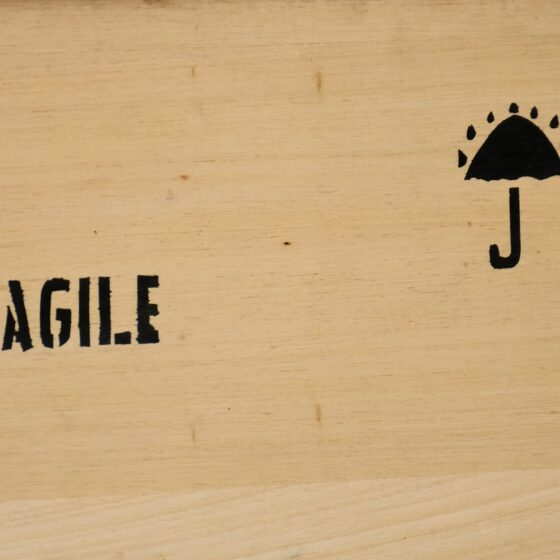The most recent holiday spending statistics reveal that not even the coronavirus pandemic can stop consumers from spending big this year. If you’re curious what the latest numbers show on Americans’ holiday spending habits, then this article is for you. Not only that, but you will also find out the hottest holiday spending facts that you may have never heard of. Let’s dive in!
The Top 10 Holiday Spending Statistics and Facts
- Americans expect to spend around $1,387 during winter holiday sales.
- 38% of people plan to spend less money during the current holiday season.
- 21% of consumers will spend on accessories and clothing during the holidays in 2020.
- About 61% of US households planned to begin shopping pre-Thanksgiving.
- Holiday spending in 2019 was 4.1% higher compared to 2018.
- In 2018, Americans were projected to spend around $5.7 billion on food for Easter.
- In 2018, advertising spending during Thanksgiving was increased by 20% by search advertisers compared to 2017.
- In 2019, Americans were predicted to spend a total of $8.8 billion on Halloween.
- In 2019, roughly 39.5 million Americans shopped on Thanksgiving Day.
- In 2020, US consumers were planning on spending an estimated $26.7 billion on Mother’s Day.
Consumer Spending Statistics During Winter
1. Holiday spending in 2019 was 4.1% higher compared to 2018.
(NRF)
In total, US consumers spent $730.2 billion in 2019 on holiday retail sales in the winter. Additionally, the increase in online and out-of-store sales from 2018–2019 was 14.6% and a total of $167.8 billion.
2. According to holiday shopping statistics, per household, Americans predict to spend around $1,387 during this winter’s holiday sales.
(Deloitte)
As a recent survey shows, this number is 7% lower than the amount of money American households spent during the same period in 2019. Since there’s been a sharp decrease in travel spending, (part of) that money is going to be directed toward holiday retail sales.
3. 38% of people plan to spend less money during the current holiday season.
(Deloitte)
Over a third of American consumers are planning to limit their spending during this year’s holidays. Interestingly, such a dramatic drop in holiday spending hasn’t been witnessed since the 2007–2008 financial crisis. Stats reveal that roughly half of the abovementioned percentage of shoppers are worried about the economy, while 40% are trying to concentrate on saving instead of spending.
4. In 2020, consumers are expected to spend $922 per household on retail categories.
(Deloitte)
Stats on retail during the holidays reveal that $435 of that figure is projected to be spent on non-gift purchases, such as home decoration and clothing. Additionally, on average, consumers are expected to spend $487 on gift cards and gifts in general.
5. During the 2020 holidays, 21% of retail spending is most likely going to involve accessories and clothing.
(Deloitte)
19% of the winter holiday budget is projected to go on gift cards, and 14% on beverage and food, as consumer spending statistics indicate. Furthermore, 13% of the total spend at retail will go on accessories and electronics, and another 13% on toys and hobby-related items. The latest toy statistics show that during the 2019 holidays, the most popular toy was the nerf gun.
6. Nevertheless, 64% of shopping during the winter holiday season in 2020 will be done online.
(Deloitte)
Sources forecast the average amount of money spent on shopping online during the holiday season at $892, while in-store purchases are expected to reach $390 per person. Moreover, 65% of consumers shop online to avoid crowds, 64% prefer the convenience of it, and 60% enjoy the option of free shipping.
7. Spending trends reveal that 61% of US shoppers planned to begin shopping before Thanksgiving.
(Deloitte)
In addition, consumers who planned to do holiday shopping before Thanksgiving were expected to spend around $1,537. Interestingly, they are likely to spend more than the remaining 39% of consumers, who start shopping on the day of Thanksgiving or after it ($1,149).
8. Christmas spending statistics reveal that Americans spent an average of $846 on Christmas gifts in 2019.
(Statista)
Americans spend big around Christmas time, and the numbers have been going up since 2018, when they set aside $794 for Christmas gifts. However, these numbers are lower than in 2017, when US consumers spent $862 on Christmas gifts on average.
9. The biggest retail sales day in US history was Super Saturday in 2019.
(ABC Columbia)
By now, you’ve probably heard of Super Saturday—the last Saturday preceding Christmas, when, typically last-minute shoppers get a chance to shop at great discounts. According to Black Friday facts and statistics from 2019, Black Friday retail sales were surpassed by Super Saturday that year by over $3 billion, reaching a whopping $34.4 billion!
Easter Spending Holiday Statistics
10. US citizens spend the most on food when shopping for Easter.
(Statista)
Americans are big foodies. According to Easter holiday spending statistics, they spent $47.97 per capita on food in 2019. On the other hand, on clothing, they spent only $27.29 the same year and even less on gifts—$24.01. Unfortunately, Americans are the greatest food waste producers in the world.
11. In 2018, Americans were projected to spend around $5.7 billion on food for Easter.
(NRF)
According to NRF’s forecasts on seasonal holiday trends, US consumers were also expected to spend a whopping $3.2 billion on clothing and $2.6 billion on candy. As for flowers, decorations, and Easter greeting cards, these purchases were projected to reach a total of $1.3 billion, $1.1 billion, and $780 million!
12. Easter candy sales statistics reveal that most candy is sold during this holiday.
(Statista)
For example, US consumers were planning to buy 2.5 billion worth of sweets for Easter in 2019. However, the stats show slightly higher planned candy expenditure levels for 2017 and 2018, when customers were forecasted to spend $2.58 billion and $2.63 billion on candy for Easter.
Halloween Spending Statistics
13. In the US, most money intended for Halloween-related purchases goes on costumes.
(NRF)
NRF’s Halloween stats indicate that US customers intended to spend a total of $3.2 billion on costumes in 2019. Additionally, their expense plans also included $2.7 billion for decorating, and $2.6 billion for Halloween candy.
14. According to holiday spending statistics for 2019, Americans were predicted to spend a total of $8.8 billion during Halloween that year.
(NRF)
That number just goes to show how massive the Halloween industry is in the United States. In 2017, that sum was even bigger, reaching $9 billion, and the year before that, it had gotten to an astonishing $9.1 billion.
15. On average, Americans spend over $85 on Halloween.
(NRF)
More than two-thirds of US citizens celebrate the spookiest time of the year. Data reveals that in 2019, an estimated 68% of US citizens celebrated Halloween, while 32% didn’t. Interestingly, stats on average holiday spending show that the amount of money spent on Halloween has been over $80 since 2015.
Thanksgiving Holiday Spending Trends
16. In 2019, roughly 39.5 million Americans shopped on Thanksgiving Day.
(NRF)
According to NRF’s data, for shoppers, the most popular day of the Thanksgiving holiday weekend was Black Friday, with over 114 million customers, followed by Cyber Monday with more than 68 million customers. Small Business Saturday comes third with over 66 million shoppers, followed by Thanksgiving.
17. American spending statistics reveal that $4.4 billion was spent online by US customers on Thanksgiving in 2019.
(Forbes) (CNBC)
Stats for the abovementioned year show a record-high number, compared to the $3.7 billion in 2018. We believe that this is because online shopping is more convenient and time-effective for many consumers.
18. In 2018, advertising spending during Thanksgiving was increased by 20% by search advertisers compared to 2017.
(Kenshoo)
According to spending statistics by holiday, between November 1 and Thanksgiving of 2018, search click costs rose from $0.27 to $0.4. Very similarly, conversion rates increased from 4% to 5.6% during the same period. Meanwhile, the engagement rates were boosted from 2.7% to 2.9%.
Valentine’s Day Holiday Spending Statistics
19. In 2020, an estimated 55% of Americans had plans on Valentine’s Day.
(NRF)
Stats from 2020 reveal that, on average, Americans were going to spend $196.31 on Valentine’s Day. As for gifts, the average expenditure in America was forecasted at $27.4 billion for that day. About 15% of total spending was for family members, 7% for friends, and 7% for coworkers. However, that percentage was, unsurprisingly, the highest with gifts for romantic partners— 52%.
20. Valentine’s Day is big in Canada and the UK, too.
(Statista) (StatisticsCanada)
Spending stats about Canada reveal that in 2017, Canadians spent $4.1 billion at various retailers on watches and jewelry for this special occasion. An additional 5.1 billion Canadian dollars was spent on perfumes and cosmetics. As for the United Kingdom, holiday spending statistics for 2019 reveal that British consumers were expected to spend an estimated £855 million on the day of love.
Other Important Holiday Shopping Facts and Statistics
21. In 2020, US consumers were planning on spending an estimated $26.7 billion on Mother’s Day.
(Statista)
According to survey results, this figure has grown significantly since 2010, when it reached $14.59 billion. That indicates an increase of over $12 billion over the previous decade.
22. In 2020, Father’s Day retail spending was projected to increase approximately by $1 billion.
(MarketingCharts)
In other words, retail seasonal trends reveal this figure was estimated to rise from $16 billion in 2019 to $17 billion. Nevertheless, Mother’s Day remains a much larger event than Father’s Day in terms of retail. For example, 86% of adult Americans planned on celebrating Mother’s Day, while 75% of them had such plans for Father’s Day.
23. US citizens spent an estimated $76.49 for Independence Day in 2020, based on consumer holiday spending statistics.
(NRF)
Overall, Americans spent more for Independence Day in 2020 than they had the previous years. In comparison, in 2019, the average American set aside $73.33 for this occasion, whereas in 2018, the amount in question was $75.35.
FAQ
What holiday has the most money spent?
According to the most recent statistics, in the US, the holiday season is the most profitable part of the year, averaging $1,387 in money spent. Naturally, this is motivated by holidays and occasions like Christmas, Thanksgiving, Cyber Monday, Black Friday, etc.
(Deloitte)
What percentage of holiday shopping is done online?
As mentioned, stats reveal that 64% of shopping during this winter season will happen online. Not only is this due to the coronavirus pandemic, but also due to the fact that many customers actually enjoy the convenience of online shopping and the chance to avoid crowds.
(Deloitte)
What is the most commercialized holiday?
Festive beverages, glitzy decor, and catchy jingles: without a doubt, the most commercialized holiday is Christmas. Based on the information by the NRF, the last months of the year make up for around 20% of total retail sales yearly. The greatest majority of these customers are US citizens who celebrate winter holidays, primarily Hanukkah, Kwanzaa, and Christmas.
(PennLive)
Conclusion
Overall, we eagerly await the holiday spending statistics for 2022, as many suggest that these will be even more surprising. Judging by these numbers, the dreadful coronavirus hasn’t stopped consumers from exhibiting shoppers’ enthusiasm over the holidays.
What is your favorite holiday, and why? How much do you spend over the holiday season? If you enjoyed our holiday spending statistics for 2020, then please leave us a comment and share this article with your friends. Until next time!













